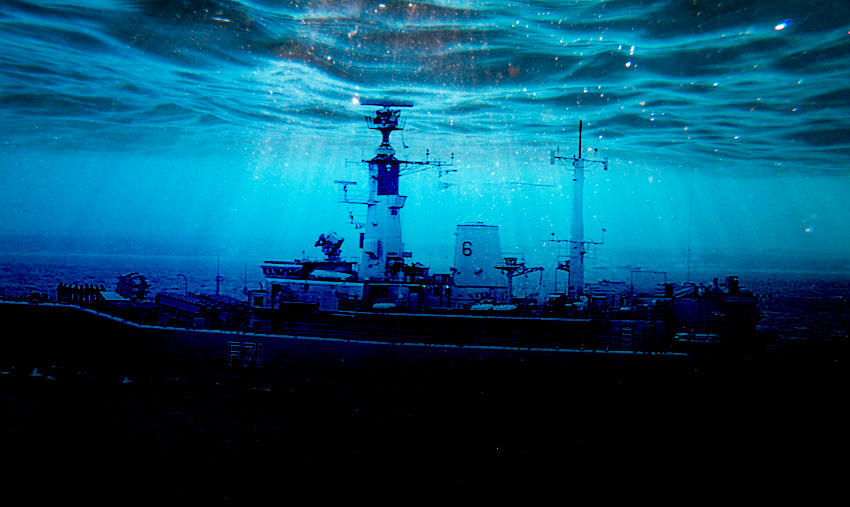Going Down
Joy and grief mark 20 years of Europe’s first artificial reef

All together now: ♫ We all live in an ad-hoc submarine…
It’s been 20 years since the U.K. navy ship HMS Scylla was intentionally sunk on a seabed in Whitsand Bay, off the coast of Cornwall, England, making it Europe’s first (planned) artificial reef.
The 370-foot Scylla served the Royal Navy from 1970 to 2003. The decision to turn her into a reef was met with great excitement; her (above-water) send-off party was attended by 120 ex-crew members. “It was a very moving, touching day,” the National Marine Aquarium was reported to have said at the time. “People were very excited about Scylla’s future, and some have decided to take diving lessons so they will be able to see her next stage.”
Things went swimmingly for a while after the ship was sunk in 75 feet of water on March 27, 2004. The new reef filled up with diverse marine life: fish, sea urchins, starfish, and mussels. It also became a thrilling place of underwater discovery for divers and marine scientists.
But then people died.
Named for a terrifying water monster from Greek mythology, the ship claimed its first victims in 2007: two seasoned divers who neglected to trail a line, causing problems when they stirred up silt inside the small area they had entered. The coroner’s report included a warning: “I hope this case leads other divers to reflect on the hazards and the precautions needed if they enter a confined hull space, particularly if it contains silt.”
Another pair died in 2021 in much the same way, but this time there was a survivor to give more details. “I could not see the exit and became totally disorientated; the visibility dropped as it silted up,” Adam Dent told the BBC at the time. “I lost sight of Mark [Gallant] and Andrew [Harman] as the silt was really bad, the visibility was zero.”
It took weeks for authorities to recover their bodies.
Still and all, the Scylla remains a popular site, with 20 boats visiting at a time some days. It’s not too deep, so it’s great for divers of all levels and even learners. It’s teeming with marine life, and can be entered with relative ease. According to the Professional Association of Diving Instructors, “HMS Scylla has matured into a classic wreck dive site.”
But divers should definitely heed the big signs throughout, warning them to “check your air”–and, on certain compartments, “enter at your own risk.”
